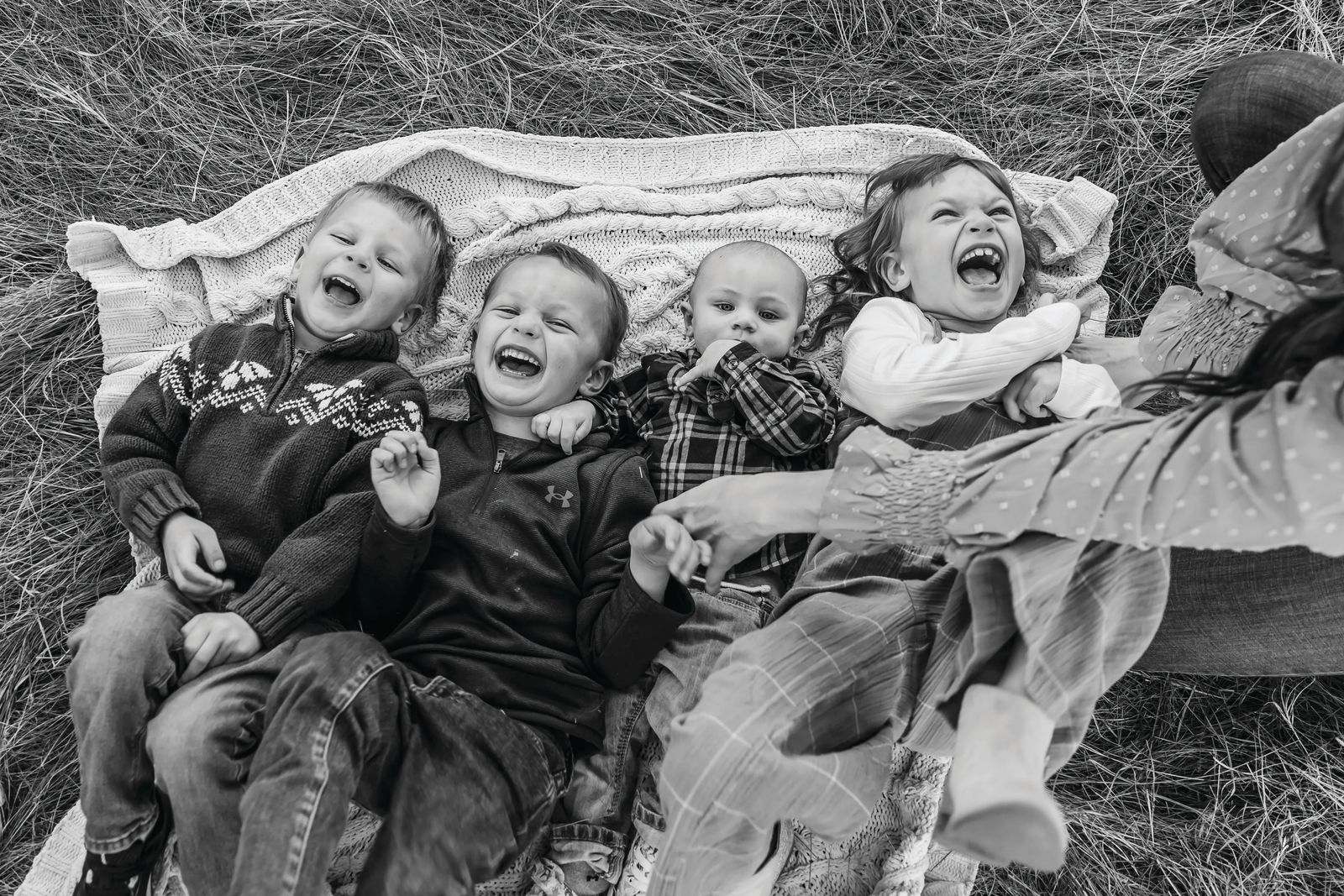
Navigating Kids' Big Emotions from Tantrums to Triumph
February 2025
Article by Tory Kolkhorst | Photos by Jennifer Dawn Photography
An old saying suggests, “Your perception is your reality.” This rings especially true for children with limited life experience and narrow worldviews. Paired with a growing brain that has not yet reached development in areas like the prefrontal cortex, which controls emotional regulation, impulse control, and decision-making, children tend to form conclusions based on how they feel in the moment. While parenting is a journey full of ups and downs around every corner, one of the most vital skills we can help children develop is understanding and regulating their emotions.
To gain deeper insight, Simply Local Magazine had the opportunity to sit down with Gwen Felton, a Licensed Clinical Professional Counselor who has been counseling clients for over 28 years. With a near-even patient mix between children and adults, Gwen has unique insight into child development within different family dynamics. When asked why emotional regulation is important in a child’s development, Felton responded, “We are wired with emotions. Emotional regulation might even be more important than learning the ABCs. This is how we connect and build attachments, and it is pivotal to developing healthy relationships later in life. You want to be able to empathize and understand others’ emotions to have successful connections.” She went on to share, “We experience emotional development from infancy, and we show cues whether it’s crying or even sucking a thumb or bottle. At around five years old, kids start getting it a bit more and can begin to empathize with others because as they enter kindergarten, they have to learn how to work with others, whether it be playing games or coloring or just following directions.”
Notably, every person has their unique “window of tolerance,” which is the range of emotional and physiological states that one can effectively function within and handle the ups and downs of a given day. “Maybe a child goes to school and has a fight with their friend, but then they go to lunch and can laugh together, and the child can move past it. You don’t want to fall outside of your window of tolerance. Getting hyper-aroused will bring thoughts of stress and anxiety, and you will feel it in your nervous system. When you slip below your window of tolerance, you are hypo-aroused; you feel low energy and withdrawn. If you want to work on emotional regulation, you need to focus on what helps you stay in your window of tolerance,” Felton shared. Since children’s brains and nervous systems are still developing, it is common for kids to be pushed outside of their windows of tolerance, so parents and caregivers need to offer encouragement and help teach children how to stay within this window.
If you are a parent or caregiver and wonder how to support your littles best as they learn to express their big emotions. There is no need to look too far for the most up-to-date strategies and literature; one of the most effective approaches that can be implemented is simply modeling behavior that you wish to be emulated. As we’ve already established, perception is reality, so kids are keenly aware of how adults respond to stress, fear, joy, anxiety, and everything in between. Felton shared, “Kids mirror their parents. If you see your child in distress, use your physicality, lower your voice, and get down to their level to help them calm down. Validate their emotions and feelings and make them feel heard because they want to be understood, and sometimes this will disarm their escalation. Parenting books should teach how to regulate one’s own emotions first. If you’re a yeller or have a big, loud personality, how can you expect your child to be anything different?”

While demonstrating healthy emotional regulation is key in teaching children how to express their feelings, there are additional tools that can be used to help kids improve their skills. Being proactive and having conversations about tough scenarios or how to navigate situations that evoke the full spectrum of emotions while the child is in a calm, regulated state can be incredibly helpful to begin processing these feelings before they experience them. Trying activities like storytelling or role-playing can be another effective yet playful way to practice different emotions and responses. Movement and sensory play are also helpful, from yoga, jumping, stretching, laying with a weighted blanket, taking deep breaths while holding a stuffed animal, and applying lotion to hands.
The bottom line is – no one knows your child better than you do; what fuels their tank, inspires them, tugs at their heartstrings, provokes anger, sparks their curiosity, and so on? Take it upon yourself to model behaviors you’d want your children to emulate and do your best to help them navigate the inevitable outbursts. Whether your child throws a tantrum in the privacy of your home or the busiest checkout line at the grocery store, your response at that moment will send a powerful message to your child, and even bystanders, that no matter the scenario, emotions are manageable. Never underestimate your own intuition, as your child’s deepest connection and fiercest advocate, to determine if behavior is within their window of tolerance or if it might be helpful to seek additional tools from a trusted professional for guidance. As Jill Churchill once said, “There’s no way to be a perfect mother and a million ways to be a good one.”
Originally printed in the February 2025 issue of Simply Local Magazine
Check this article out in the digital issue of Simply Local here!





